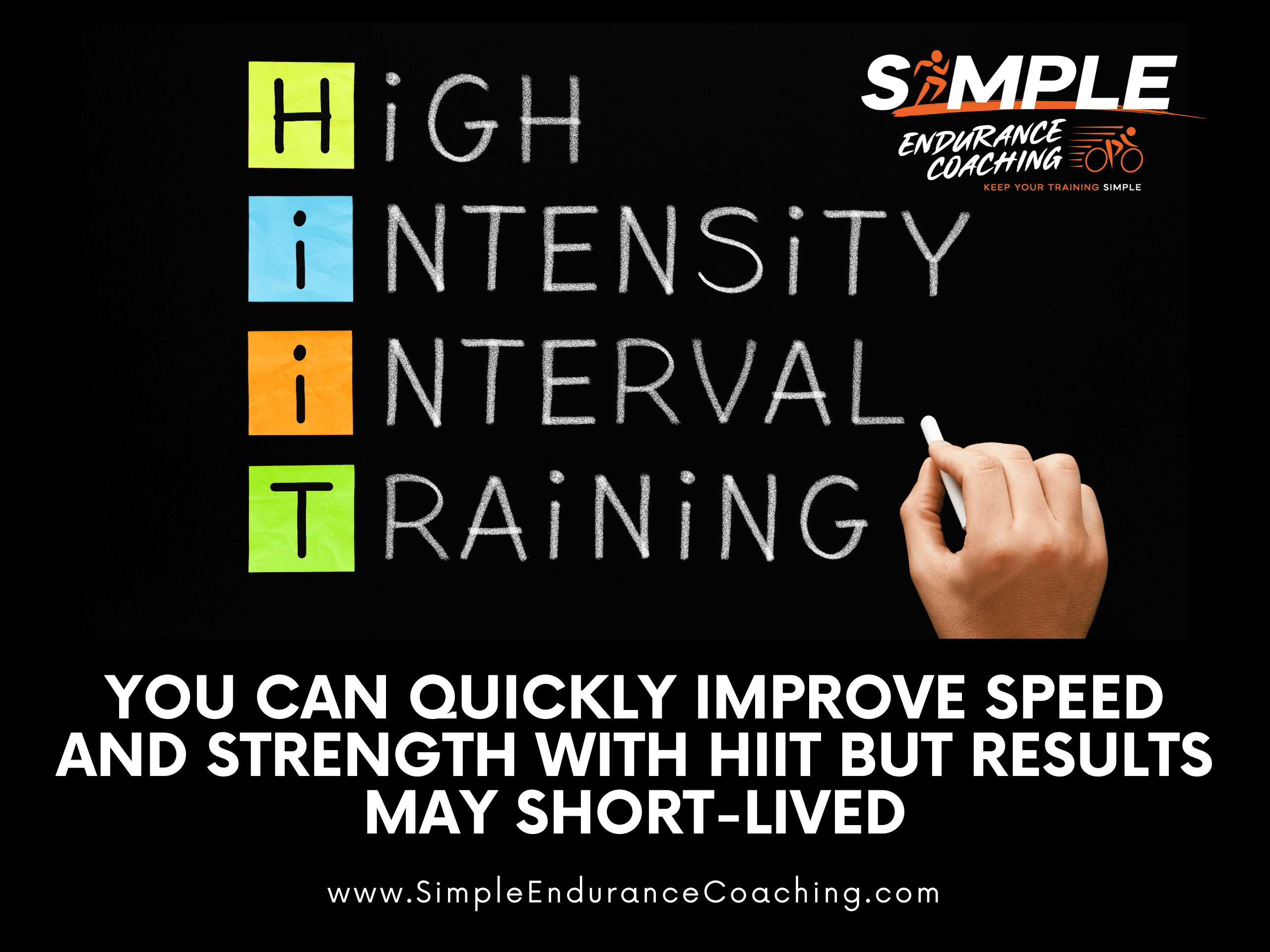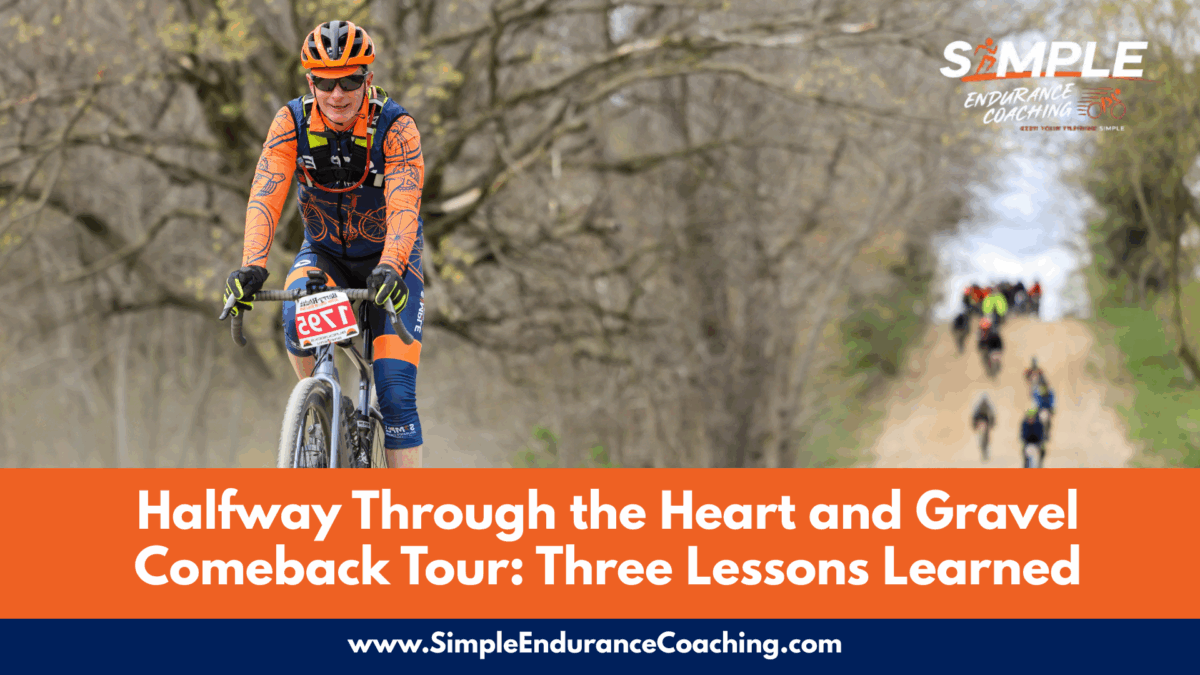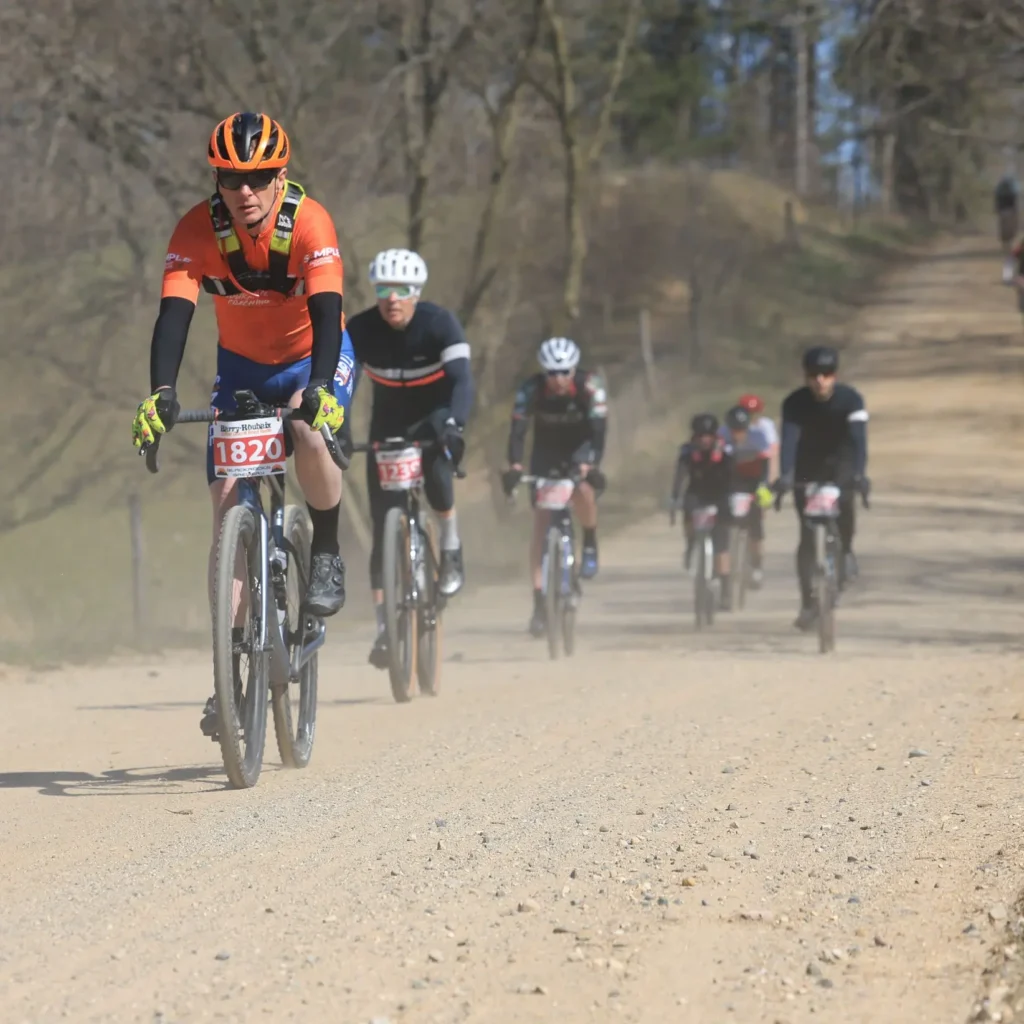You Can Quickly Improve Speed And Strength With HIIT But Results May Short-Lived
High-intensity interval training (HIIT) receives a lot of attention from casual gym-goers to elite athletes.
And with good reason.
HIIT for runners and cyclists works – not only to build speed, power, and VO2max, but to build aerobic endurance and general fitness.
Yes, you can increase your aerobic capacity through really, really hard and short intervals.
For cyclists and runners, though, you have to be careful to do HIIT work in the right dose, otherwise, it’s easy to get overtrained!

HIIT allows more intensity in shorter times
In terms of description, HIIT (high-intensity interval training) and regular intervals can be different but mostly in duration and intensity.
What makes the common HIIT different is that your interval is usually very short (20 to 40 seconds) with a short recovery.
There are differences in adaptations with different intensities, and we’ll talk about that later, but generally, the short, intense intervals have proven to produce significant gains.
The main idea of HIIT for cyclists and runners is that we can work harder, for a longer period of time, and at a lower perceived exertion than doing longer intervals.
HIIT causes several physiological adaptations
Alex Hutchinson, a writer who reviews current research in his Sweat Science column in Outside Magazine, wrote about the effectiveness of HIIT for runners and cyclists.
Here’s what he said:
“The key result is that the short-interval group improved mean power in a 20-minute cycling test by 4.7 percent after three weeks of training, while the long-interval group improved by only 1.4 percent. They also had a 3-percent increase in power output at a blood lactate concentration of 4 mmol/L, which is a standard benchmark approximating lactate threshold; the long-interval group had a 3.5-percent decrease. Several other measures also suggested that the short-interval group had gotten fitter while the other group stagnated”
Hutchinson did warn that these athletes were already well-trained, so they were more likely to respond to shorter efforts since they were typically already doing the longer efforts.
So why not do HIIT all the time?
Since most endurance training brings similar adaptations, and high-intensity intervals bring about the most adaptation, why not do HIIT work all the time?
The issue is recovery.
You can bring about a lot more adaptation in a given time if you are able to do longer endurance work simply because there is less damage to recover from.
Plus, with really hard, short intervals, you can bring your fitness to a fine point quickly, but it doesn’t last long.
The key is to structure the intervals in ways that target specific adaptations with specific recovery.
The common interval sessions are 20/10, 30/15, 40/20, and 30/30s. The first number is the interval duration, and the second is the recovery, in seconds.
Generally, with HIIT work, you go as hard as you can consistently run or ride for the specified time.
We don’t know about long-term adaptations
We don’t know as much, though, about whether doing HIIT regularly produces the same kind of long-term adaptation.
For example, we need to do sub-Critical Power intervals to increase Critical Power and extend the time we can hold CP.
I don’t know of the research that shows that doing HIIT work so your average power, if you’re a cyclist, is under your CP.
I’ve tried reducing the intensity of 40/20 intervals, for example, to mimic longer threshold intervals with some success.
HIIT can be more effective than long intervals
In a study into the effectiveness of short versus long intervals, Ronnestad, et.al., showed that interval sessions with 30 seconds on and 15 seconds off were more effective than traditional longer intervals with the same amount of work time.
The idea is that the shorter intervals allow us to work at a higher power output for the same amount of work time, therefore accumulating more time at a higher work level.
Moreover, Ronnestad says the short intervals also teach our aerobic systems to more efficiently utilize lactate as fuel.
“Our series of studies showed that performing short intervals compared to long intervals for 2-3 times per week for 3-10 weeks resulted in superior performance adaptations in both well-trained and elite cyclists.”
The key to HIIT for cyclists and runners is perceived exertion and staying consistent with the effort.
Different kinds of HIIT sessions
In the book, Science and Application of High-Intensity Interval Training, the authors go deep into the how and why of HIIT.
They go a little beyond the research of Ronnestad to include short intervals that are less than five minutes
They break up HIIT for runners and cyclists work into different kinds of intervals:
- Long intervals: 2 to 5 minutes with 1 to 3 minutes of recovery.
- Short intervals: 10 to 60 seconds with less than a minute recovery.
- Short sprints: 3 to 10 seconds with less than 45 seconds of recovery.
- Long sprints: 20 to 30 seconds all-out with 1 to 4 minutes of passive rest.
Recovery times cause different results
While many of the adaptations are similar with different intervals, there are differences, depending on how you do the interval and the recovery.
For most cyclists and runners, your goals, time of the season, and “weaknesses” will determine the kind of intervals you’ll do.
And do only two or three sessions a week at the most!
If you do more, you’re risking overtraining and injury.
So first, know your goal for intervals: building aerobic capacity, improving metabolic efficiency, or neuromuscular strength.
Second, decide the type of interval for intensity, duration, and recovery.
Dr. Philip Skiba, for example, suggests starting high-intensity work with 30/30 work, then progressing to 2 to 5-minute intervals.
Also, make sure you get the necessary protein and carbohydrate recovery fuel after your session.
Slow endurance is still the mainstay of your training
Regardless of what kind of intervals you decide on, remember that slow endurance volume is still critical for your overall training.
Not only do you create less training stress with slow work, but you also develop fatigue resistance and other adaptations better with endurance training than with HIIT.
Volume matters.
Slow volume should still make up the majority of your training time, with additional strength training and yoga with intervals.
Here are three things to consider with HIIT for cyclists and runners:
- Two or three HIIT sessions a week is the absolute maximum.
- Plan your HIIT session with intensity, duration, and recovery for the time of year, target adaptation, and your specific training and competition goals
- Plan adequate recovery and nutrition to fuel your HIIT work
Want to know more about what you can achieve?
If you liked this article, please share it with others.
Do you have questions? Email me at paulw at SimpleEnduranceCoaching.com
I support a limited number of cyclists and runners achieve their goals with more strength, endurance, and mobility.
Contact me or sign up for Virtual Coffee so we can discuss your goals, ask questions, and talk about making your endurance training more effective, fun, and Simple.
You can also opt-in to receive my weekly blog posts about what works in endurance sports.
Paul Warloski is a:
- USA Cycling Level 3 Coach
- RRCA Running Coach
- Training Peaks Level 2 Coach
- RYT-200 Yoga Instructor
- Certified Personal Trainer





